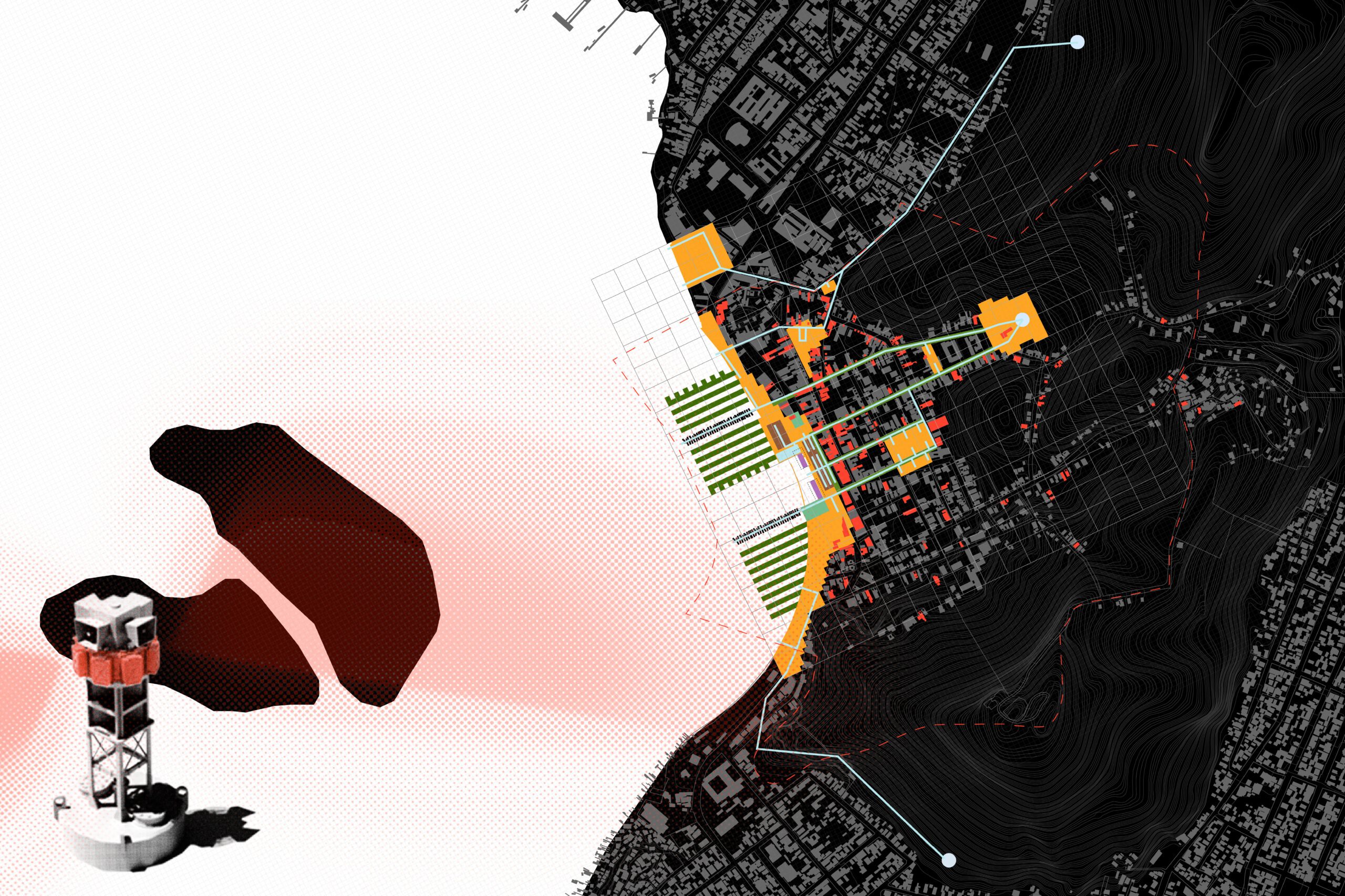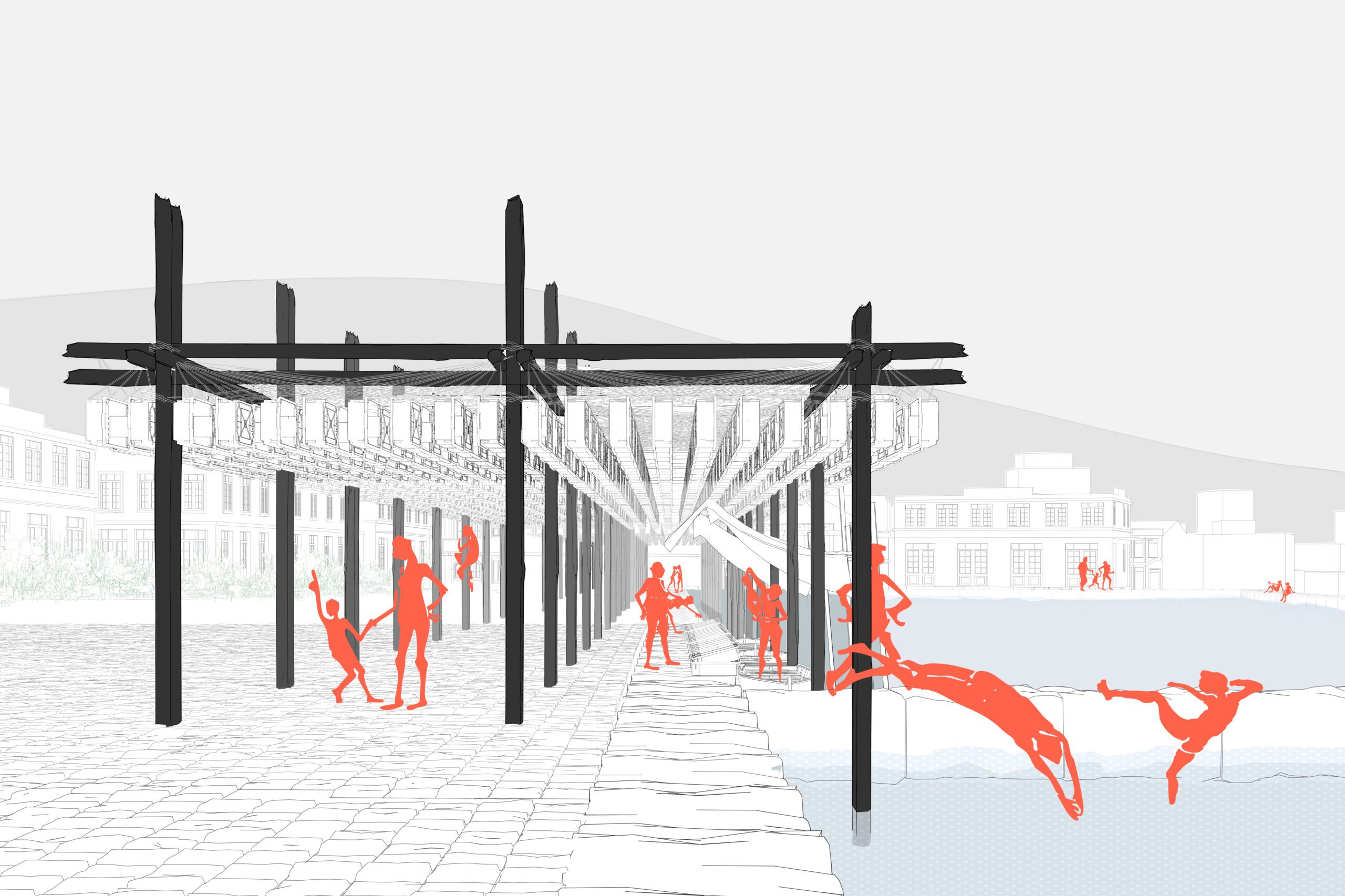Project implementation: Brazil
Project development: Brazil
Multidisciplinary team in Architecture and Urbanism and Biology at UDESC
Laguna was born of water and has always found its foundation in it. The sambaquis scattered throughout the landscape bear witness to the ancestral relationship of indigenous peoples with bodies of water, marked by listening and care. European colonization imposed a different logic: that of domination and erasure. The natural springs, once audible in the landscape, were channeled, sold in fountains, and divided by taps. Today, they remain forgotten just a few blocks from where distributors sell bottled water from far away.
Urbanization also reinforced inequalities. While the elite occupied the central plain, fishermen were pushed beyond the hills, establishing fishing villages on landfills, vulnerable to rising sea levels.
The Santo Antônio dos Anjos lagoon represents the convergence of clear waters from the springs and, at the same time, today also retains the pollutant load of 26 municipalities brought by the flow of the Tubarão River.
Despite the disfiguration of the original way of inhabiting the territory, it is still possible to witness the local connection with the water. The sarilhos personify the maintenance of this link: they are structures built over the water to store boats, a kind of extension of the home that extends beyond the shoreline.
+FISHERMAN+HALF+FISH+ was born from this conflict. The research, starting with fish crates as an object of the operational chain, reveals how fishermen were never at the heart of the city's history while also reflecting their importance as interlocutors of the existing landscape. The proposal elevates this subject to the central figure and proposes to consider the relationships that surround it.
The project reactivates the three springs, reconstituting a water network that weaves together the different elements of a complex cycle. The network allows for the irrigation of urban gardens, the supply of popular restaurants, and its distribution to public taps. Before flowing completely into the lake, the water is directed to a communal pool.
The sediments from the lagoon's silting are used to form chinampas, cultivation structures above the water, expanding cultivation possibilities, while in its canals, shrimp are produced organically.
The research seeks to enable the various elements of a complex cycle to mutually reinforce and sustain each other, as in living networks, any stimulus propagates like a domino effect.




